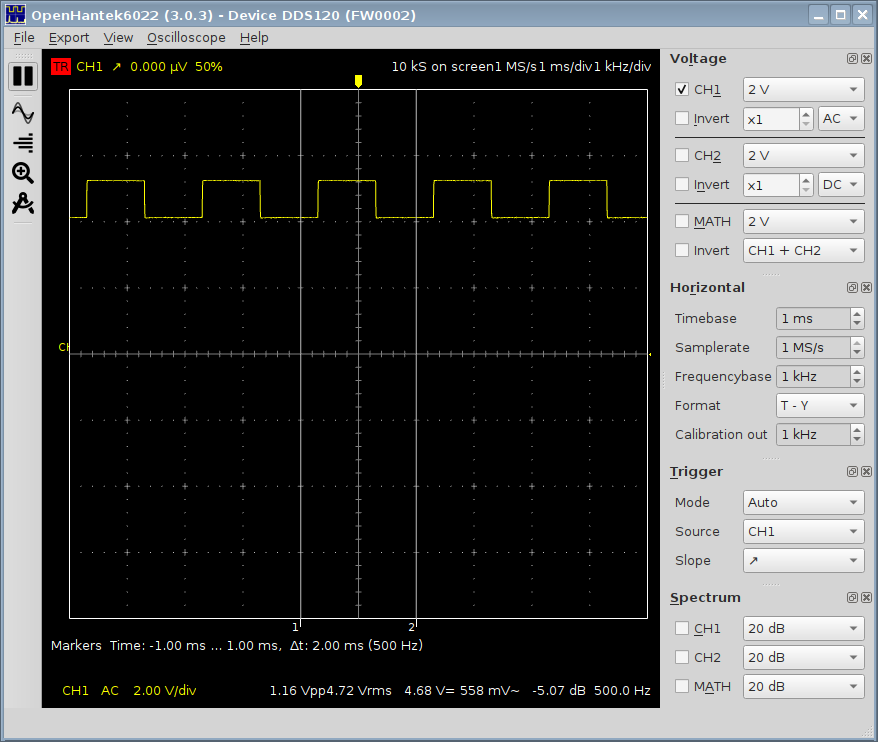There are two possibilities to get offset and gain calibration values: 1) Read the *.conf file 2) If this file is not available or contains no valid data the factory (or user) calibration values of HANTEK6022 are read from EEPROM.
I suspect that the DDS120 firmware does not support the reading of EEPROM content, so reading of calibration values failed and uninitialised memory content was used.






There is an offset between the vertical position of the trace and the channel marking CH1 in DDS120, please see screenshot, this might be related or be the same as bug #39 but it is already closed. I would expect that the channel marking would be at the base of the trace as in the images shown in the readme.